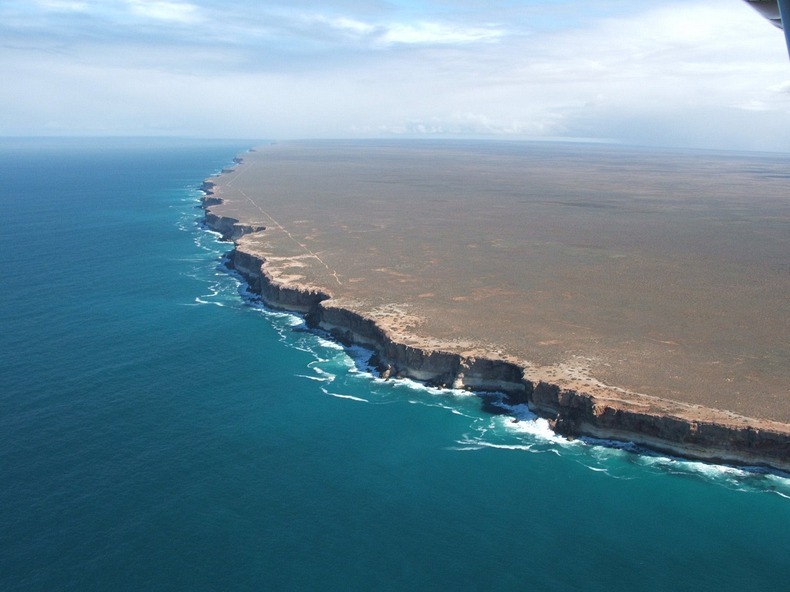There are also places where underground caves or sinkholes have collapsed to form dents in the surface.
But mostly, the plain is horizontally flat and devoid of trees, as its Latin name suggests.
Bunda Cliffs form the southern edge of the Nullarbor Plain which extends far inland.

The white coloured base you see near the bottom of the cliff face is Wilson Bluff Limestone.
This Wilson Limestone is up to 300 metres thick but only the upper portion is visible in Bunda Cliffs.
Above the white Wilson Limestone are whitish, grey or brown layers of limestone or crystalline rock.

Some layers incorporate marine fossils including worms and molluscs indicating their marine origin.
Other layers are made up entirely of marine sediment (foraminifera).
But they are better appreciated from the air.

Eyre and the third Aborigine, Wylie, continued on their journey and completed the crossing in June 1841.
The Eyre Highway was laid exactly a century later in 1941.
Head of the Bight is one of these calving/mating grounds.

Photo credit
Sources:Wikipedia,Travelling Australia,Explore Australia









